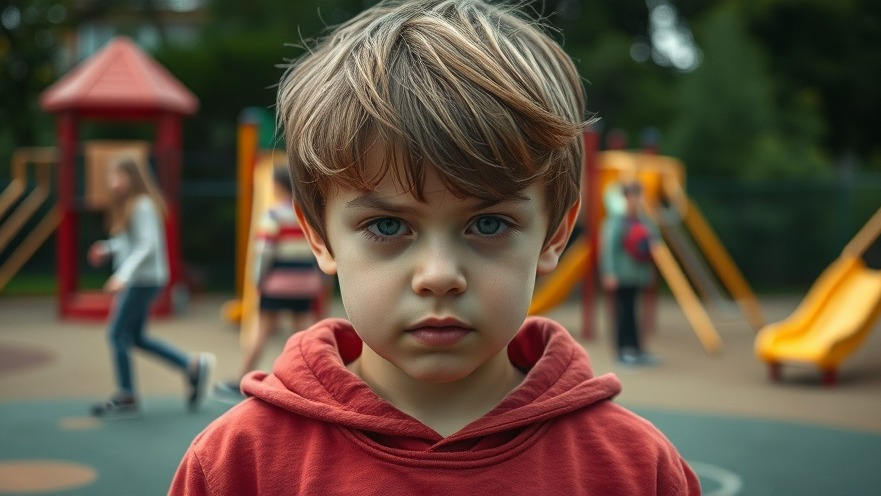
Understanding Anxiety and Depression in Children
The prevalence of anxiety and depression among children has become a significant concern for many parents and healthcare providers. As naps and playdates become overshadowed by worry and fear, it's crucial for us to understand the nuanced signs of these mental health challenges. It’s not just about typical childhood fears; when these feelings persist or intensify, they may indicate anxiety or depression—conditions that can significantly affect a child's overall well-being.
Recognizing the Signs of Anxiety
Anxiety in children can manifest in various forms that may not always be apparent. For instance, persistent fears—whether about separation from parents (separation anxiety disorder) or specific phobias—may lead to problems in daily activities such as school and social interactions. Symptoms can sometimes be subtle; children may exhibit irritability, sleep disturbances, or even physical complaints like headaches or stomachaches. Understanding these signs is crucial for parents and healthcare providers alike, as early intervention can make a significant difference.
Understanding Depression in Young Minds
While it's normal for children to feel down from time to time, persistent feelings of sadness or a lack of interest in activities they once enjoyed can indicate depression. Major depressive disorder is a common diagnosis among children struggling with these feelings. The symptoms might include having low energy, weight loss or gain due to changes in appetite, and a pervasive sense of hopelessness. Parents and caregivers need to be equipped to recognize these signs not just as phase-related emotions but as significant mental health issues requiring attention.
Importance of Open Communication
Creating an environment where children feel safe sharing their fears and feelings can not only help in identifying potential mental health issues but also foster stronger relationships between parents and children. Open conversations about emotions allow children to express themselves freely, as opposed to keeping worries bottled up inside. Encouraging emotional communication can serve as a protective factor in child mental health, potentially alleviating severe anxiety or depressive symptoms.
Resources for Families and Care Providers
If you suspect your child is struggling with anxiety or depression, the first step is to consult with a healthcare provider for an evaluation. Various resources, including counseling, therapy options, and educational materials, are available through pediatric practices, schools, and community health organizations. By taking these proactive steps, not only can families alleviate their child's current emotional distress, but they can also enhance the child's long-term mental resilience and adaptability.
Empathy in Patient Care
Understanding childhood anxiety and depression is not only an essential skill for healthcare providers but also a pathway to cultivating lasting patient relationships. Concierge medical practices, in particular, can leverage this knowledge to create more holistic approaches to patient care, recognizing the integral link between mental health and overall wellness. Prioritizing mental wellness within your practice not only benefits your patients but can also serve as a distinguishing factor in your business, attracting families seeking comprehensive care for their children.
Call to Action
If you are a medical practice owner, consider implementing regular training and resources focusing on mental health awareness for your staff. By fostering an empathetic approach that recognizes the signs of anxiety and depression in children, you can set your practice apart as a leader in comprehensive care.
 Add Row
Add Row  Add
Add 




Write A Comment